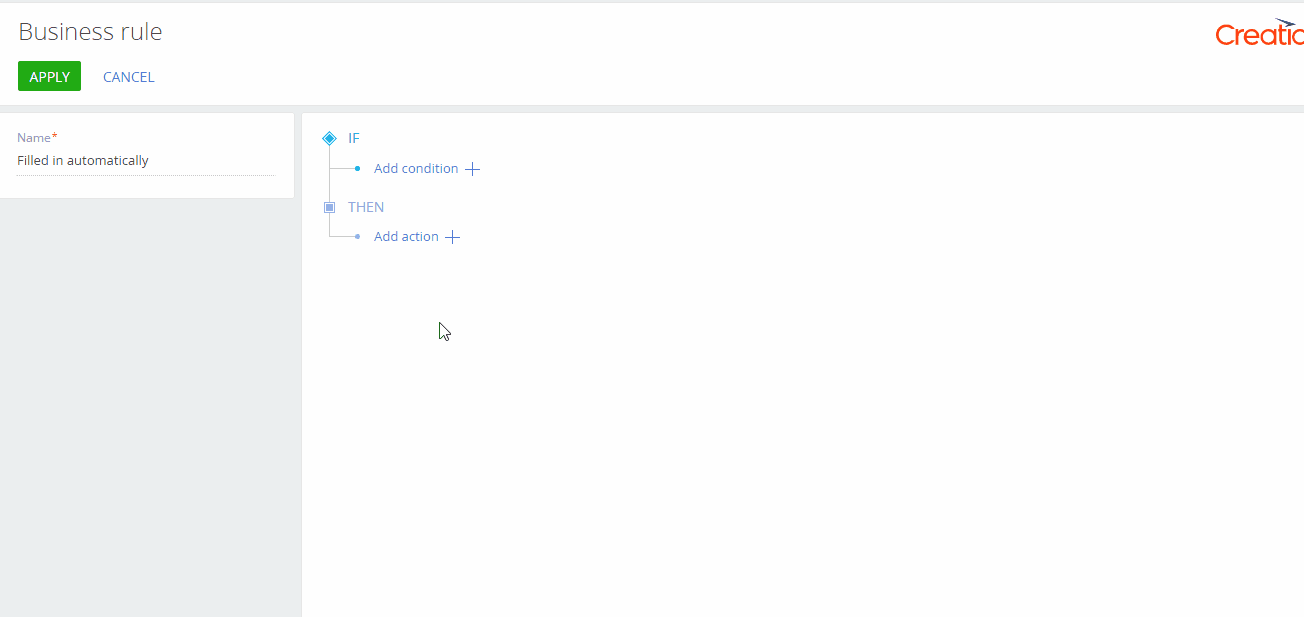You can set up a business rule that will apply filter to the list of values in the lookup field. This will make the list shorter.
To implement the logic of the case, add a business rule that would filter the values in the Owner lookup field. To do this:
-
Open the needed section (e.g., the Requests custom section) and add a new business rule. You can learn more about adding and setting up a new business rule in the “Set up a new business rule” article.
-
In the “THEN” block of the business rule, set up the action that would implement the needed business logic (Fig. 1):
-
Click Add action.
-
In the drop-down menu of possible actions, select “Add field values filter.”
-
In the Which field to filter and which connection in this field’s lookup to use for filtering? field, click
 .
. -
In the opened window, click + next to “Requests” → select Owner as the connected object field.
-
In the Column field, select Type from the drop-down list → click Select.
-
Click the
 icon and select the “Lookup” in the drop-down list. A set of fields for specifying lookup values will appear to the right.
icon and select the “Lookup” in the drop-down list. A set of fields for specifying lookup values will appear to the right. -
In the Which field to filter by filed to the right, select “Employee”.
-
-
Click Apply → Section Wizard → Save.
As a result, only the contacts of the “Employee” type will be available for selection in the Owner field of the request page.
Clear and populate fields automatically
When working with filtering values in Creatio, you can automatically clear and populate fields on a record page.
For example, you can set up a business rule that will automatically populate the [Account] field on a request page if the request owner is specified. This rule will also filter the owners by the account if the [Account] field is populated on a request page.
Additionally, you can set up clearing the [Owner] field on a request page automatically if the account value is changed.
To implement this logic:
- Open the needed section (e.g., the [Requests] custom section) and add a new business rule. You can learn more about adding and setting up new business rules in the “Set up a new business rule” article.
- In the “THEN” block of the business rule, set up the action that would implement the needed business logic:
- Click [Add action].
- In the drop-down menu, select “Add field values filter.”
- In the [Which field to filter and which connection in this field’s lookup to use for filtering?] field, click
 .
. - In the opened window, click “+” next to “Requests” → select [Owner] as the connected object.
- In the [Column] field, select [Account] from the drop-down list → click [Select].
- Click the
 icon and select “Field” in the drop-down list.
icon and select “Field” in the drop-down list. - In the [Select field] window that pops up, select “Account” on the [Requests fields] tab.
- Select the [Clear when the Account field is modified] checkbox to clear the [Owner] field on a request page automatically if the account value for this specific contact is changed.
- Select the [Populate when the Owner field is populated] checkbox to populate the [Account] field on a request page automatically if the request owner is specified.
Setting up a business rule for clearing and populating fields automatically

As a result, the [Owner] field on the request page will be cleared each time the account is changed for the corresponding contact. The [Account] field will be populated automatically if the owner of the request is specified.
